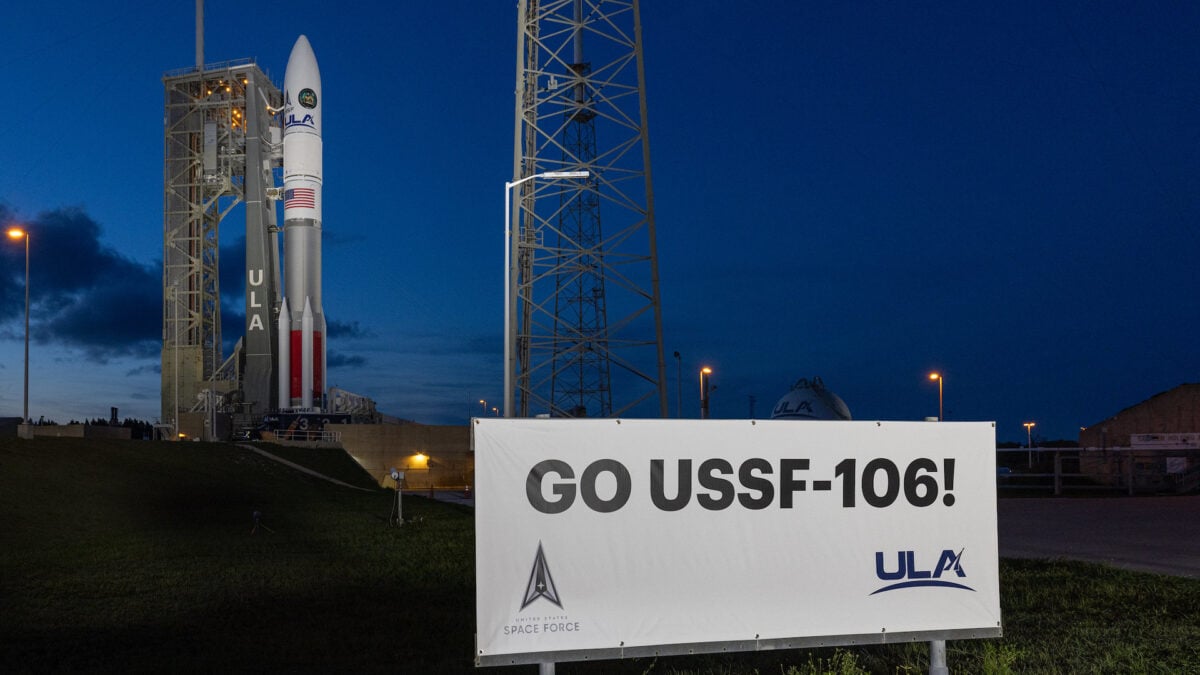ULA’s Vulcan Rocket to Launch Mystery Payload on Debut Space Force Mission

United Launch Alliance (ULA) is gearing up for a long-awaited comeback, returning to secretive payload lifts for the National Security Space Launch program with its heavy-lift Vulcan Centaur rocket.
ULA’s Vulcan is set to launch on Tuesday from Cape Canaveral Space Force Station during an hour-long launch window that opens at 7:59 p.m. ET, marking the vehicle’s first flight for the U.S. Space Force’s national security program. It took years of development for the rocket to reach this stage, and its debut was further delayed by a booster anomaly during the second certification flight last year. Tuesday’s mission is an important step for ULA as the company returns to the classified launch business with a new rocket and a lot to prove.
The launch will be broadcast live on the company’s YouTube page, and you can also tune in through the feed below.
[embed]https://www.youtube.com/watch?v=7rftsSmvefY[/embed]
The 200-foot-tall (60-meter) rocket will carry an experimental navigation satellite developed by the Air Force Research Laboratory, called NTS-3, to geostationary orbit, as well as a second mystery payload that has not been disclosed. “We’re not going to make any further comments on anything beyond NTS-3 in the mission stack,” Space Force Colonel Jim Horne told reporters on Monday, according to Payload.
ULA earned its certification for national security launches following two test flights last year. The first launch went smoothly, but the rocket ran into trouble the second time around. Around 35 seconds after liftoff, a plume of smoke appeared to be coming off one of its two boosters. The main purpose of the mission was to gather data for Vulcan’s certification; the rocket was carrying a mass simulator (a dummy payload) and other instruments. Since there were no paying customers on Vulcan’s flight, ULA absorbed the full cost of the launch.
The booster anomaly, which took place in October 2024, resulted in months of delays before the Space Force finally gave ULA the green light to launch its payloads. “We’ve done a couple of full-scale static fires, extensive sub-scale analysis and modeling to get to launch [Tuesday] at an acceptable risk,” Horne said, according to Spaceflight Now. “So, that’s the process that we had to work through as we got ready for this mission and we handled that by our mission-specific certification process.” The vehicle was certified in March, and the Space Force then worked through mission-specific risk analysis before deciding on a launch date, Horne added.
In the past few years, SpaceX has been the Space Force’s main launch provider for classified missions. With Vulcan now on board, the Space Force can rest easy with two companies providing access to space instead of one.
Vulcan is a mostly expendable heavy-lift launch vehicle, first conceived in 2006, with design elements similar to its predecessors: ULA’s Atlas V and Delta IV rockets. It can carry up to 25.8 metric tons to low Earth orbit (LEO) and 7 metric tons to geostationary orbit (GEO). By comparison, SpaceX’s Falcon Heavy can lift up to 64 metric tons to LEO and 9 metric tons directly to GEO. ULA is aiming to fly nine missions this year and finally get to work on clearing some of its backlog for national security payloads set to launch on Vulcan.









